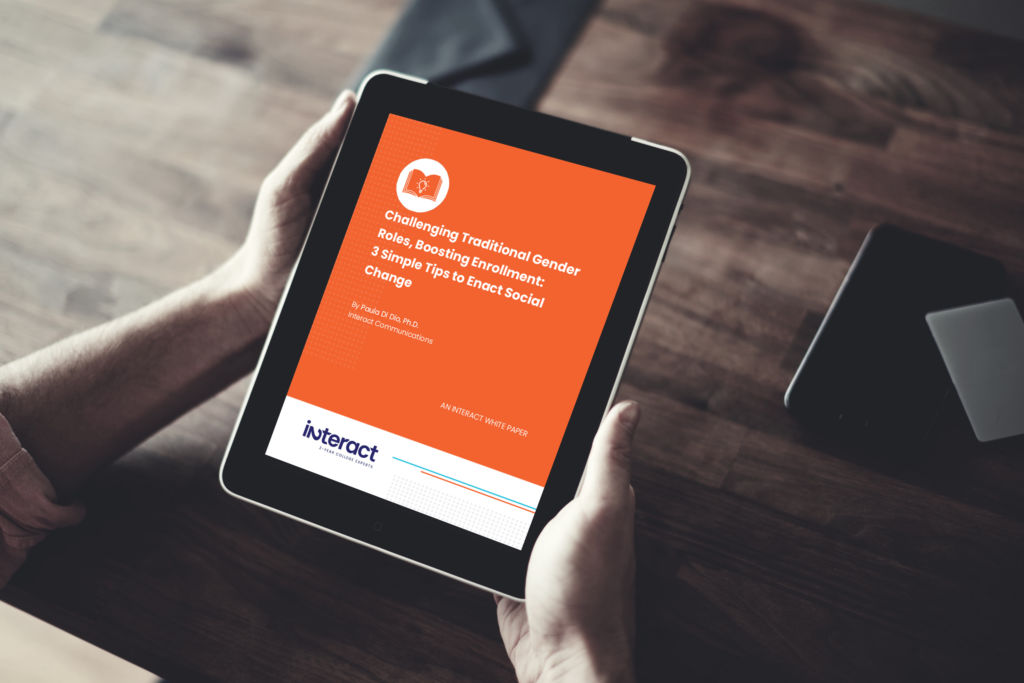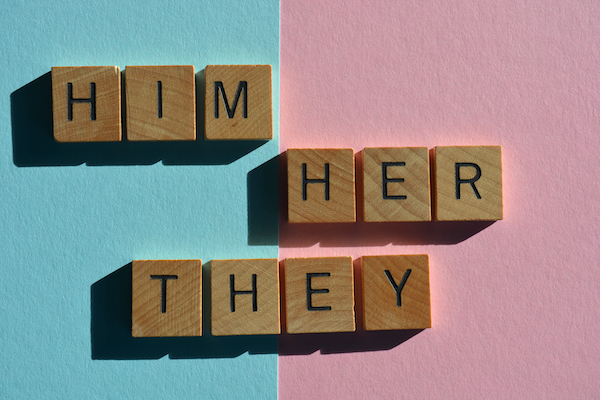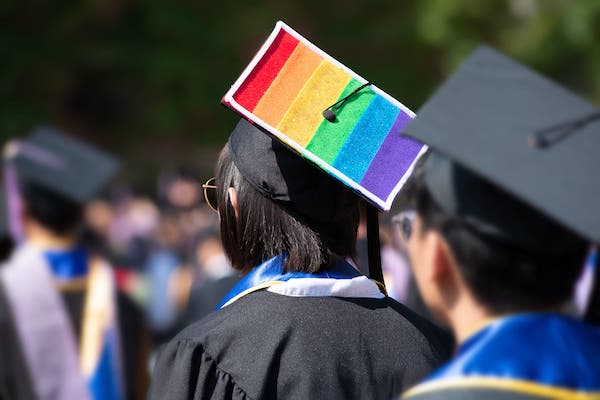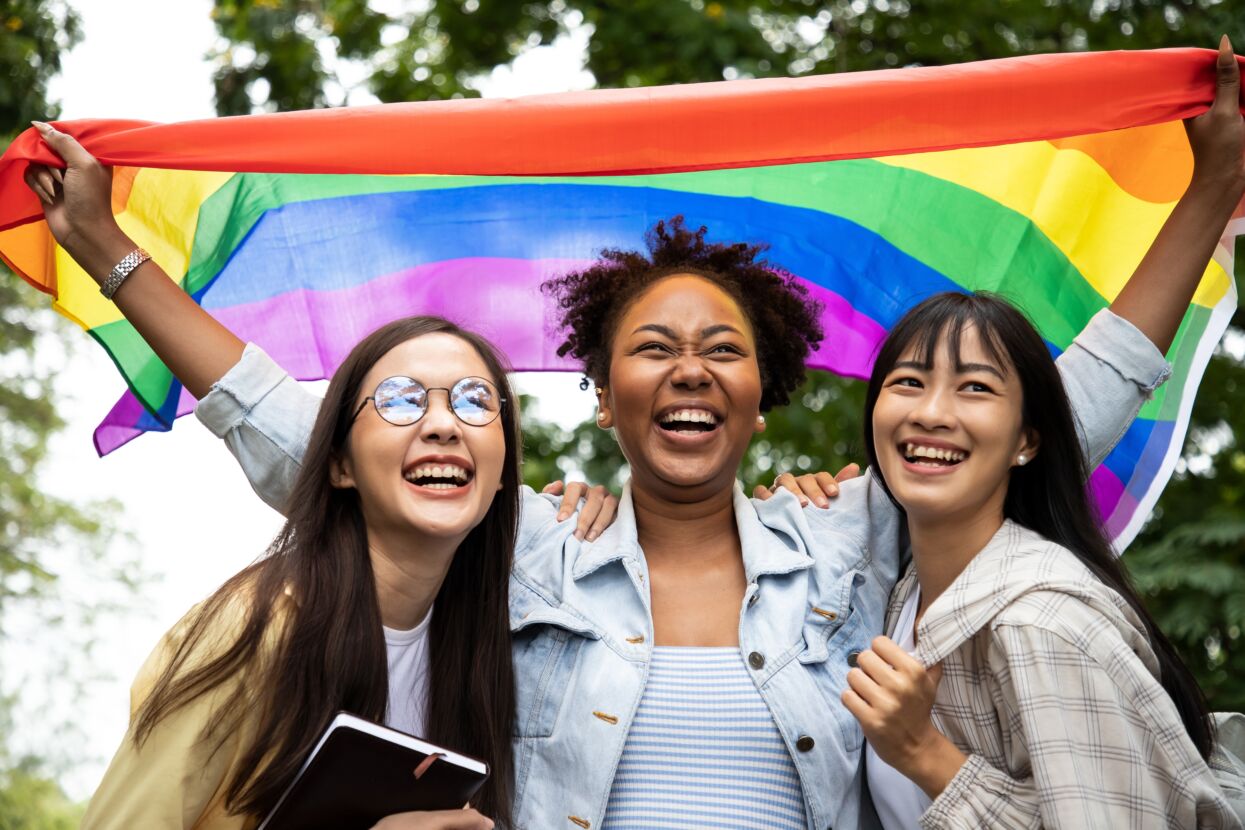The History of Pride Month
Happy Pride Month 2022! Interesting fact: Pride commemorates the Stonewall riots on June 28, 1969, protesting a police raid on the Stonewall Inn, a gay bar in Greenwich Village, NYC. The riot and subsequent protests were a tipping point for the LGBTQ+ movement.
The next year on June 28, thousands of protesters marched from the Stonewall Inn to Central Park in what was then known as “Christopher Street Liberation Day.” It was the first gay pride parade, and since then, folks have continued to march and celebrate.

Pride is honored worldwide with parades, parties, concerts, and more. In the United States, Pride became federally recognized in 2000 when President Bill Clinton declared June as Gay and Lesbian Pride Month. In 2011, President Barack Obama would officially proclaim it Lesbian, Gay, Bisexual, and Transgender Pride Month.
LGBTQQIP2SAA: What It Stands For
Speaking of expanding inclusion, there have also been expanding letters. Since 1970, the acronym LGBT has grown to LGBTQQIP2SAA, which stands for the following:
- Lesbian
- Gay
- Bisexual
- Transgender
- Queer
- Questioning
- Intersex
- Pansexual
- Two-Spirit (2S)
- Asexual
- Ally
More commonly, the term is “LGBTQ+,” with the plus sign acting as an umbrella for the subsequent identities.
The BBC does a good job of breaking down some of these terms in this video:
This video in the InQueery series, which explores the meaning and history of LGBTQ+ vocabulary and culture, does a great job of defining the “two spirit” identity:
Over the summer term, how does your college plan on celebrating Pride Month?
Supporting LGBTQ+ Students on at Community College
Why is it important to support LGBTQ+ students on campus?
Because “LGBTQ+ students experience a higher incidence of substance misuse, depression, suicidal ideation, and academic and extracurricular disengagement than their non-LGBTQ+ peers,” according to a study by The Proud and Thriving Project. And during the pandemic, those pressures have increased.
Now more than ever, colleges need to help LGBTQ+ students succeed in college. For actionable steps you can take, check out our free white paper by Interact’s Dr. Paula Di Dio: “Challenging Traditional Gender Roles, Boosting Enrollment: 3 Simple Tips to Enact Social Change.
LGBTQ+ Campus Centers Provide Essential Support
Why are LGBTQ+ campus centers crucial? As the pandemic continues, along with rising anxiety and depression rates, support centers play an increasingly important role. These spaces help LGBTQ+ students find health care, as well as mental, emotional, and academic support. They are also places where students can find mentorship, peer inclusion, and advocacy.
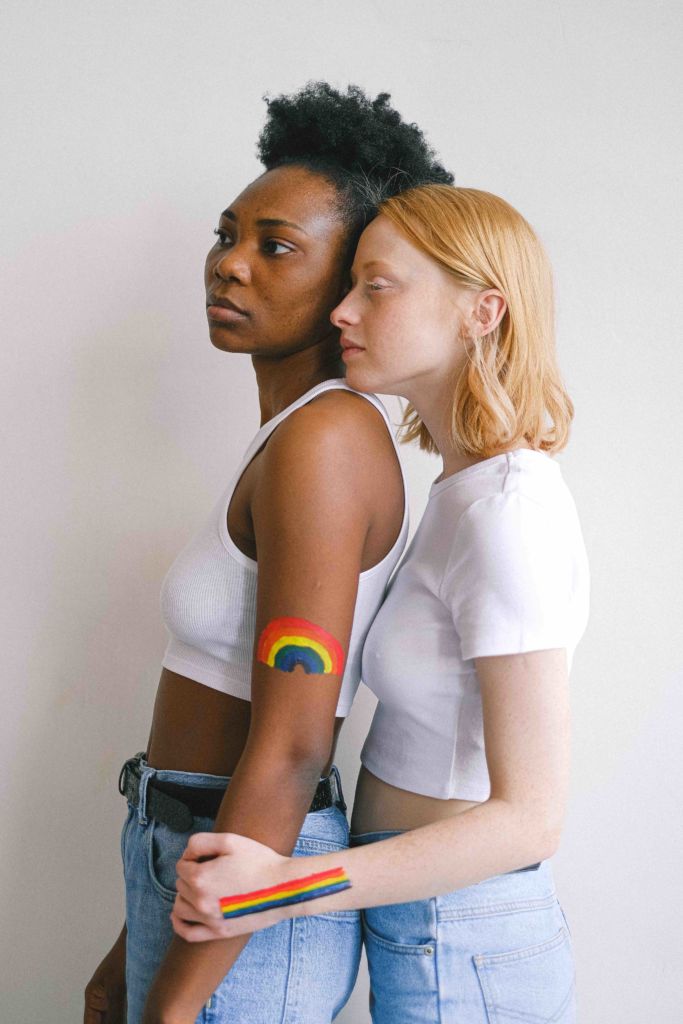
According to “Why LGBTQ+ Campus Resource Centers Are Essential,” by Gilbert, Siepser, Fink, and Johnson, the pandemic has disproportionally impacted LGBTQ+ students. Meanwhile, their research also shows that the presence of these centers correlates with lower levels of discrimination and stress. Now more than ever, students need these resource centers for support, education, and advocacy.
Centers offer safe spaces for students that they might not be able to find elsewhere in their communities or homes. And these spaces provide resources for faculty and instructors to become better allies.
Does your college have an LGBTQ+ resource center?
AP Stylebook on “Out,” “Openly,” and “Coming Out”
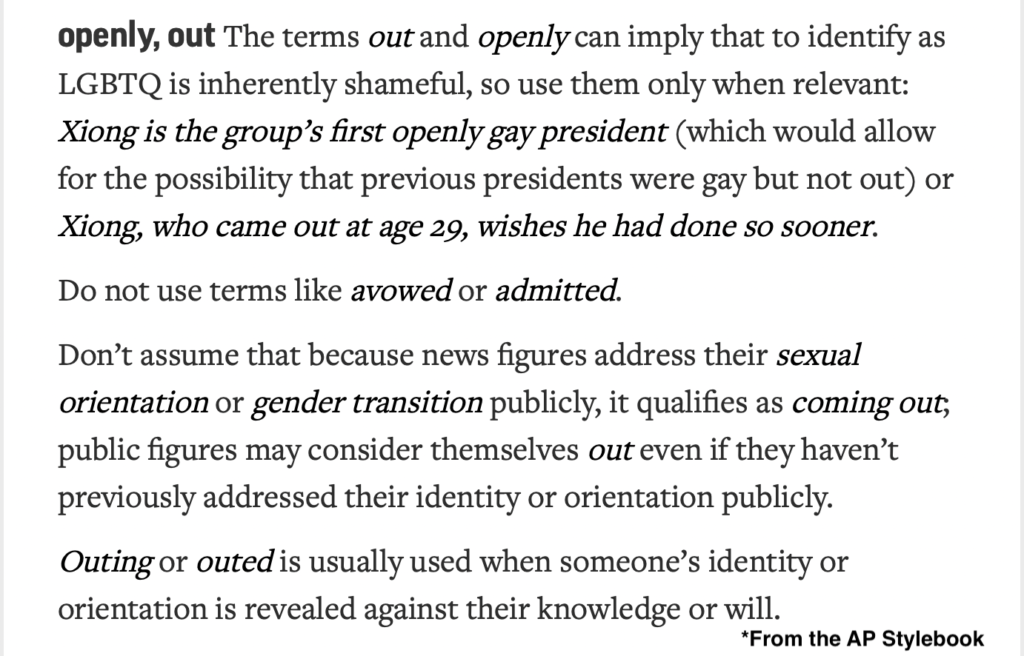
According to the AP Stylebook, terms like “out” and “openly” should be used only when relevant.
What About the Term “Coming Out”?
Additionally, in a question last June that asked about the term “coming out,” this was the response from an AP editor:
“As a journalist and gay man, I find that expression extremely offensive and insulting, as do many others in the LGBTQ+ community. The expression refers to ‘coming out of the closet,’ as if one was inside cowering in fear.
“Straight people are never disparaged with such statements because they never have to ‘come out,’ they just live their lives and date whom they please. But it seems LGBTQ+ people are expected to make such announcements about their sexuality. … Just this week, I heard and read journalists referring to Carl Nassib, a defensive end for the Las Vegas Raiders, as ‘coming out’ when he announced he was gay.
“Nassib has apparently been openly gay with family and friends. He didn’t need to reveal his sexual orientation to the world, but he chose to. He certainly wasn’t coming out of a closet but simply making an announcement during Pride Month so that other LGBTQ+ individuals might be emboldened and reassured by his example and not resort to suicide because of bullies or an unenlightened media that continue to use outdated and disparaging phrases such as ‘coming out’ or ‘coming out of the closet.’”
From the Ask the Editors entry, “Do you still condone the use of the phrases ‘come out’ or ‘coming out’ in connection with people who identity as members of the LGBTQ+ community?”
While the term “coming out” is still used by organizations like Planned Parenthood and PFLAG (Parents, Families, and Friends of Lesbians and Gays), note that there is controversy. Be sensitive to who you’re talking to, and consider using alternatives, like “sharing,” “disclosing,” or “inviting in.”
Inviting In Versus Coming Out
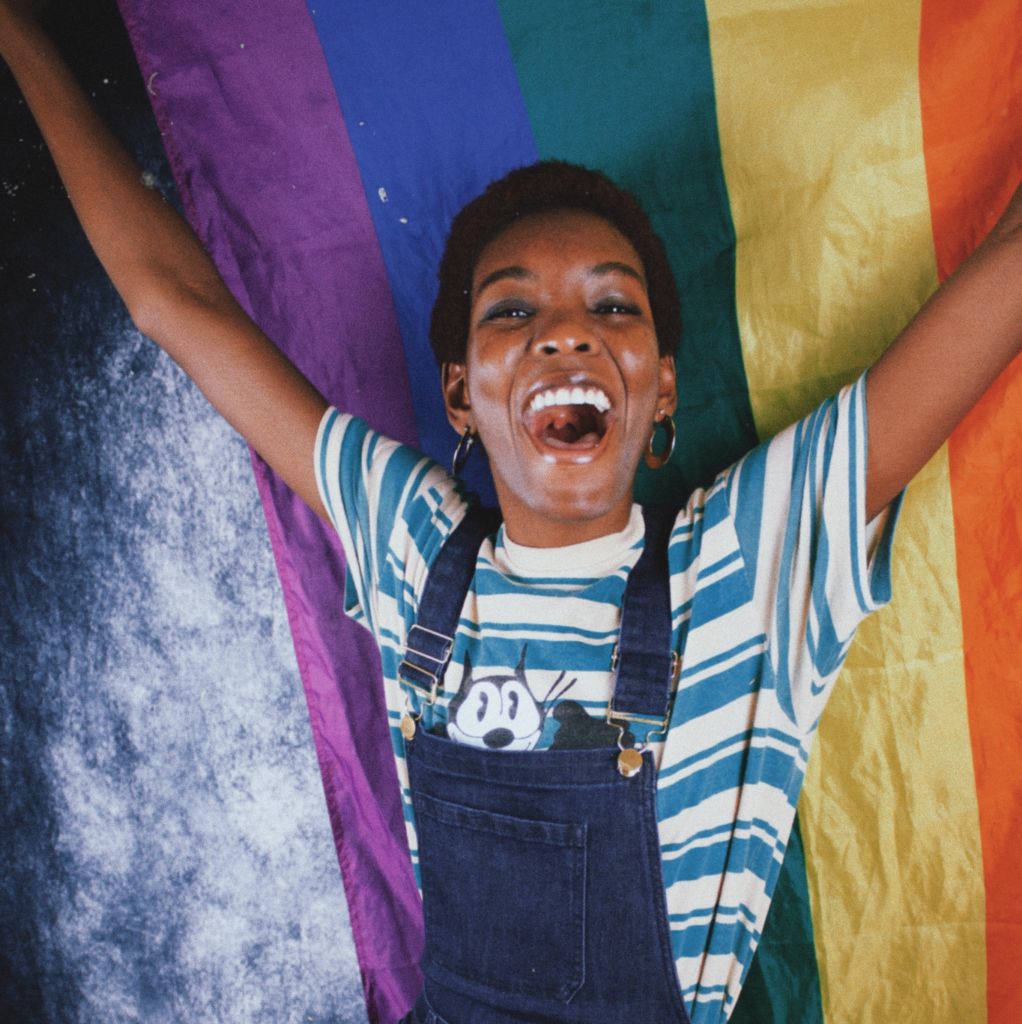
“Inviting In” is considered a common alternative to “coming out.” CSU Fullerton has an excellent handout on the subject that says the following:
While “coming out” can be empowering for some, it can be overwhelming for others. Some believe that “coming out” perpetuates a harmful power dynamic that pressures LGBTQ+ individuals to “confess” their identities to the public, which is not something cisgender-heterosexuals are also expected to do.
“Inviting in” gives LGBTQ+ individuals the power and choice to choose who they want to share their sexuality or gender identity with. This narrative removes the overwhelming connotations of “coming out” and supports the idea that sexuality and gender identity are yours to share if and when you’d like to.
From the guide, “Coming Out Vrs. Inviting In,” from California State University, Fullerton
Inviting In Versus Coming Out for BIPOC LGBTQ+ Folks
“Coming Out” can also be a different experience for individuals in non-white communities, where “Inviting In” might be preferred. The video “Why Some Black LGBTQIA+ Folks Are Done ‘Coming Out'” does a great job explaining:
Pride Month 2022 Conclusion
Since the first pride parade in 1970, June marks a time to celebrate LGBTQ+ advocacy and inclusion. Supporting LGBTQ+ students on campus is crucial, especially as the pandemic puts extra stress on these folks. LGBTQ+ campus centers can help support students with finding resources, support, and belonging. And finally, be sensitive in your messaging to these students and try to find language that is inclusive and empowering.
Wishing you a happy Pride Month 2022!
If you’d like to read more about supporting LGBTQ+ students, check out the articles below:
